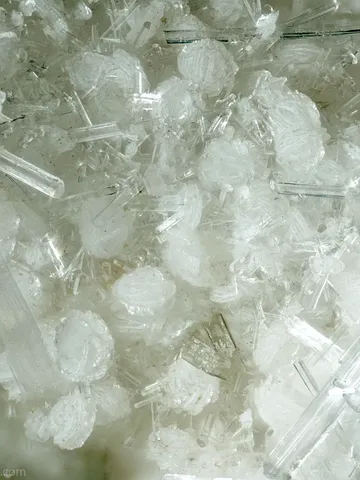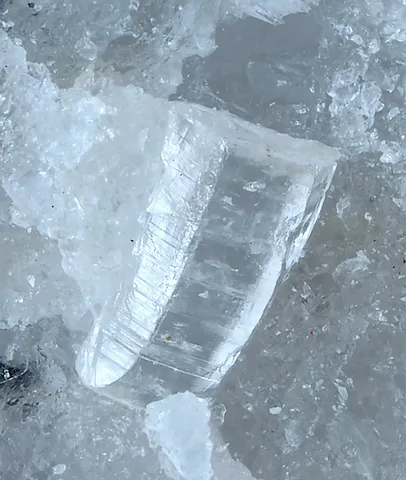BROMELLITE
Class : Oxides and hydroxides
Subclass : Oxides
Crystal system : Hexagonal
Chemistry : BeO
Rarity : Very rare
Bromellite is an extremely rare beryllium oxide. It is a primary hydrothermal mineral of manganiferous skarns and some calcite veins, and a secondary mineral of nepheline syenites, where it arises from nepheline alteration. It was named in honor of the Swedish physicist and mineralogist Magnus von Bromell. Bromellite occurs in hemimorphic prismatic crystals not exceeding 1 mm, sometimes grouped in irregular rosettes, or in cleavable masses measuring up to 10 cm.
Main photo : Bromellite from Långban Mine, Sweden © Marko Burkhardt
Bromellite in the World

Twinning
Twins are known on {111} for this mineral species.
Fakes and treatments
No fake identified for this mineral species.
Hardness : 9
Density : 3.01
Fracture : Conchoidal
Trace : White
TP : Translucent to transparent
RI : 1.705 to 1.733
Birefringence : 0.028
Optical character : Uniaxial +
Pleochroism : None
Fluorescence : White-yellow
Solubility : Sulfuric acid
Magnetism : None
Radioactivity : None

